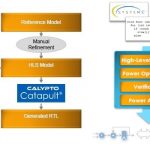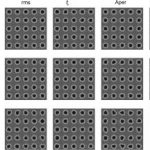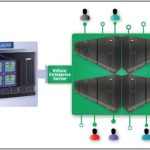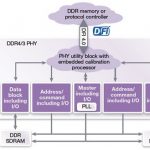As semiconductor IP is growing bigger in size and more complex in providing complete solution for a particular functionality in an SoC, regions from across the world are joining to provide various types of services in the overall value-chain of IP development, verification, and its integration into SoCs. … Read More
Tag: soc
Semiconductors Future Hinges on a Single Pillar
A unique phenomenon has started manifesting itself under the slew of mergers and acquisitions this year in the semiconductor landscape. This phenomenon is bound to intensify in the near future and would positions itself as a key factor for the future of the semiconductor industry. The winners and losers in the game would be determined… Read More
Leveraging HLS/HLV Flow for ASIC Design Productivity
Imagine how semiconductor design sizes leapt higher with automation in digital design, which started from standard hardware languages like Verilog and VHDL; analog design automation is still catching up. However, it was not without a significant effort put in moving designers from entering schematics to writing RTL, which… Read More
Challenges in IP Qualification with Rising Physical Data
With every new technology node, there are newer physical effects that need to be taken into account. And every new physical effect brings with itself several new formats to model them. Often a format is also associated with several of its derivatives, sometimes an standard reincarnation of a proprietary format further evolved… Read More
5 Verification Challenges of IoT Solved by Emulation
Software-centric Emulation environment takes the forefront in modern SoC verification. As more and more devices are IoT enabled, the SoCs have to make special provisions to factor many things including communication, power usage, and network switching, and so on. Also, the demand for an SoC (specifically for smartphone which… Read More
Advances in DDR IP Solution for High-Performance SoCs
In this era of high-performance, low-power, and low-cost devices coming up at an unprecedented scale, the SoCs can never attain the ultimate in performance; always there is scope for improvement. Several methods including innovative technology, multi-processor architecture, memory, data traffic management for low latency,… Read More
HLS with ARM and FPGA Technologies Boosts SoC Performance
The way SoC size and complexity are increasing; new ways of development and verification are also evolving with innovative automated tools and environment for SoC development and optimization. IP based SoC development methodology has proved to be the most efficient for large SoCs. This needs collaboration among multiple players… Read More
Breaking the Limits of SoC Prototyping
Earlier this month during my conversation with Dr. Walden C. Rhines, he emphasised the need for our next generation designers to think at system level and design everything keeping the system’s view in mind. The verification will go through major transformation at the system level. I can see the FPGA prototyping systems already… Read More
Verification with Tcl for what? – part 2
In Orion Bytes we use Tcl both for the internal research, product and different verification services. We use also SystemVerilog UVM and Python based Cocotb for different approaches. I think it’s no need to deep into the SystemVerilog and UVM principles here – today’s main verification fashion is well described through… Read More
Why Gemini 2.0 is tailored for tomorrow’ SoC designs?
You probably have seen many times this graphic showing that the number of IP blocks has exploded, going from a few dozens in SoC designed in 65 nm to 120 if not more for last generation SoC targeting 16FF or 10FF. This graphic is very good at synthesizing the raw IP count, but it doesn’t tell you about another strong trend: more agents … Read More






